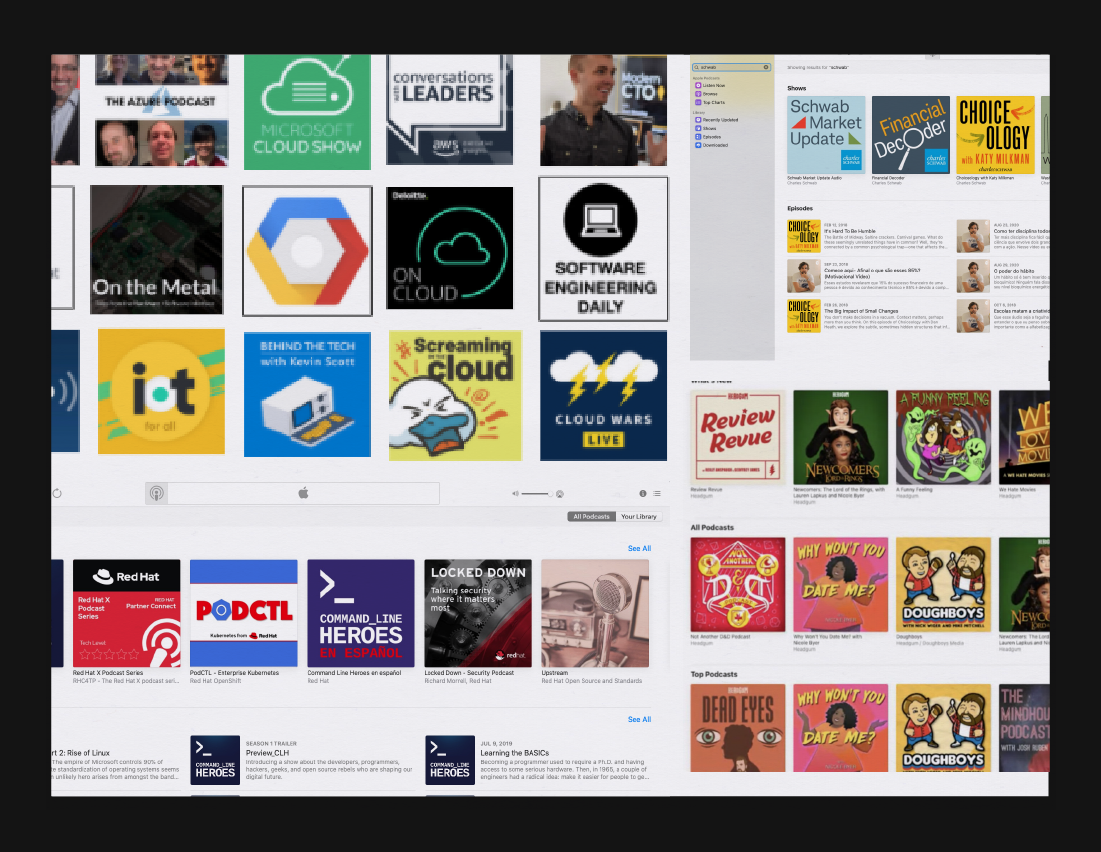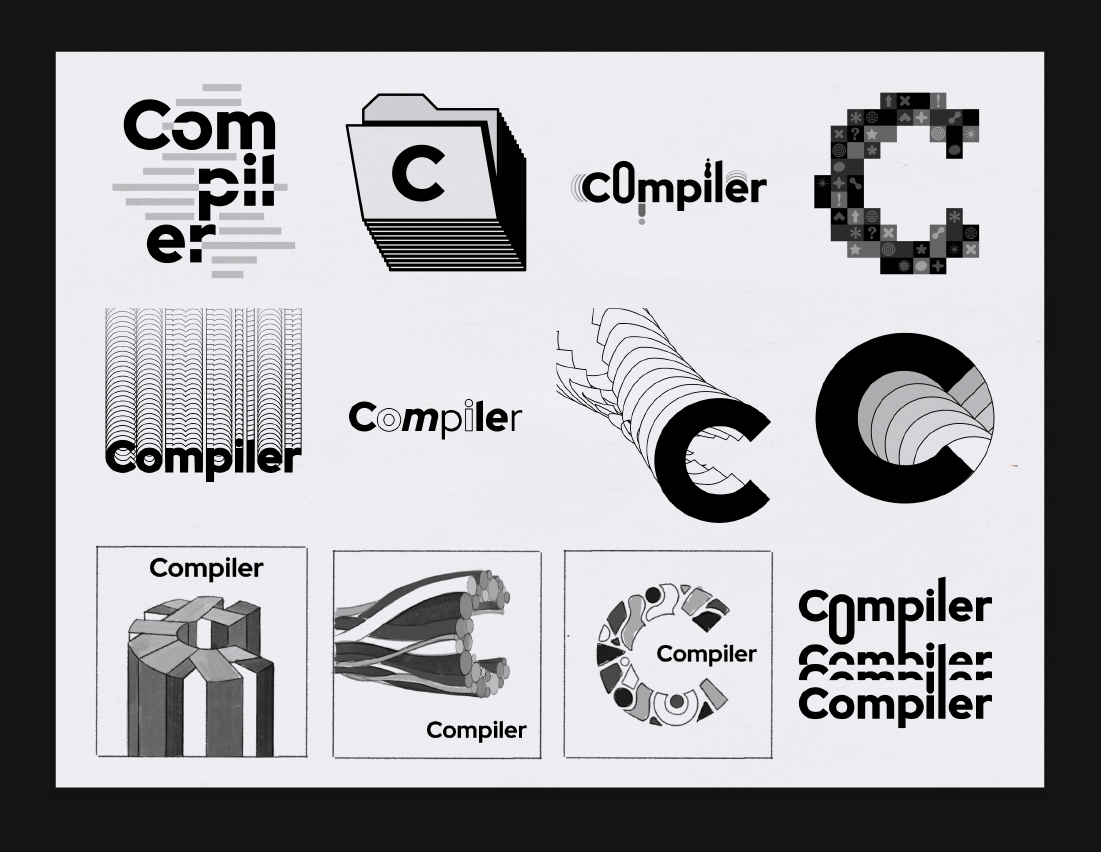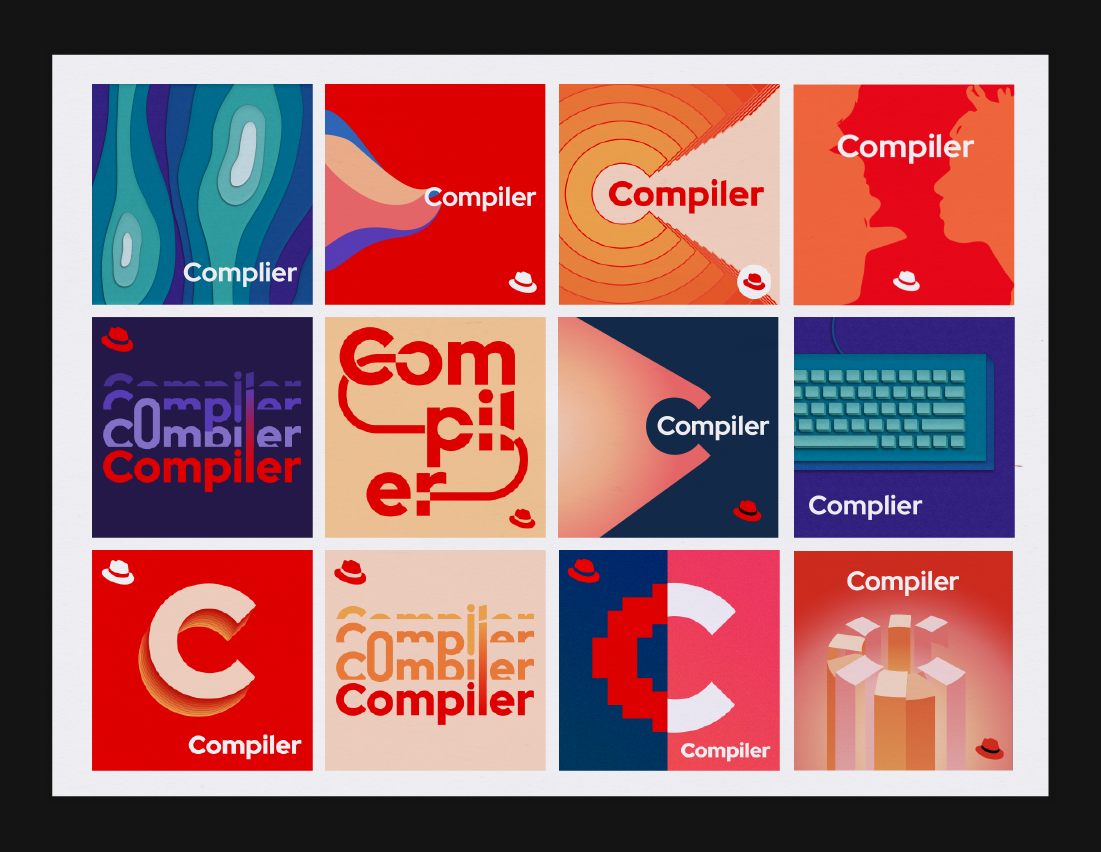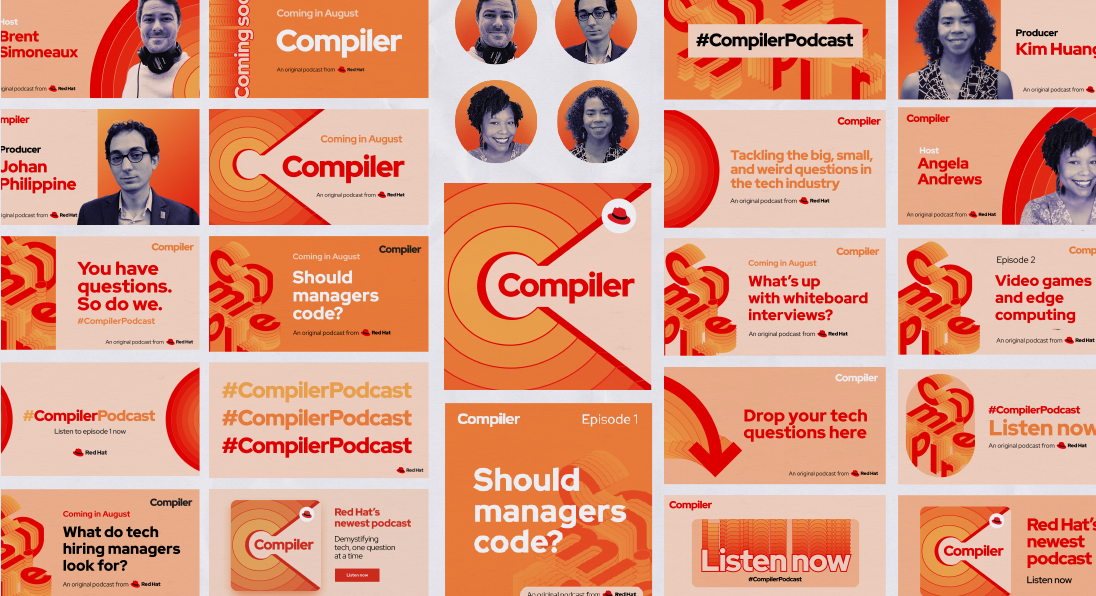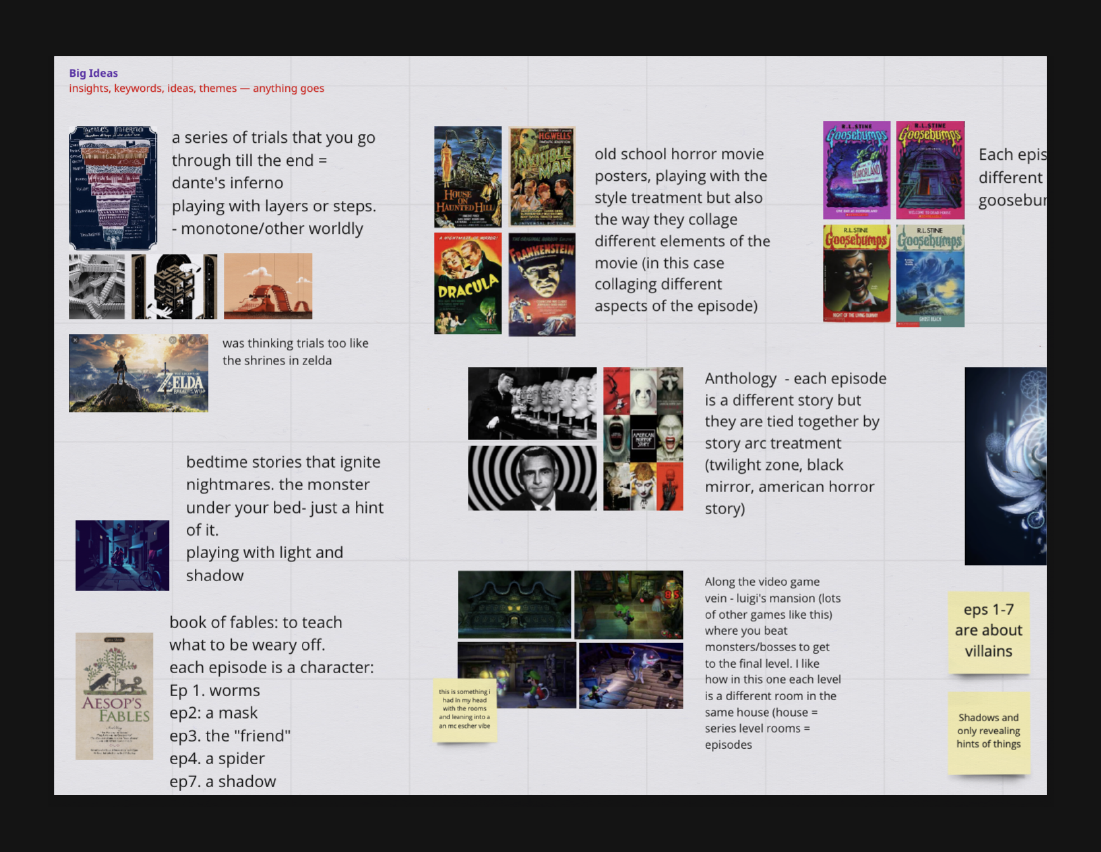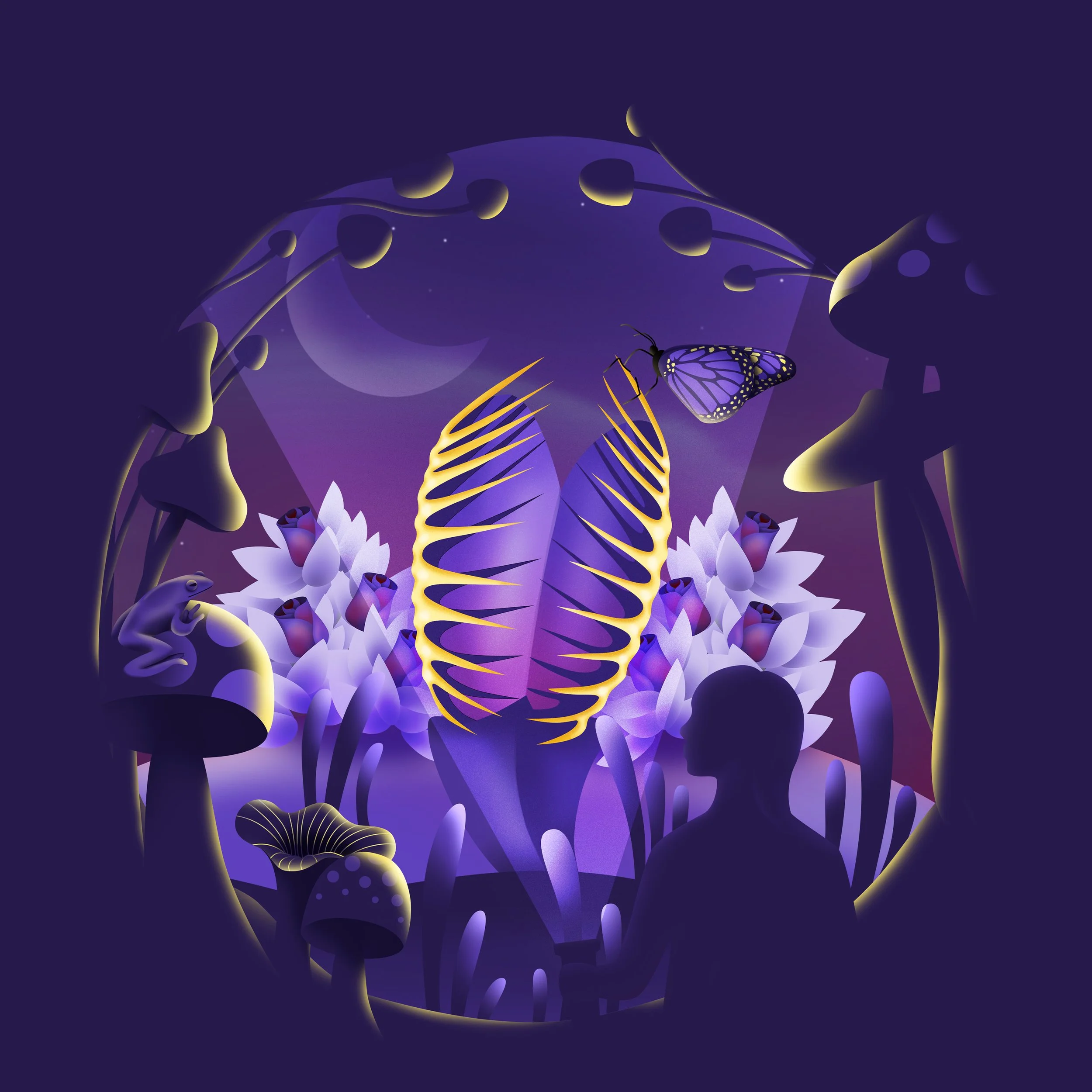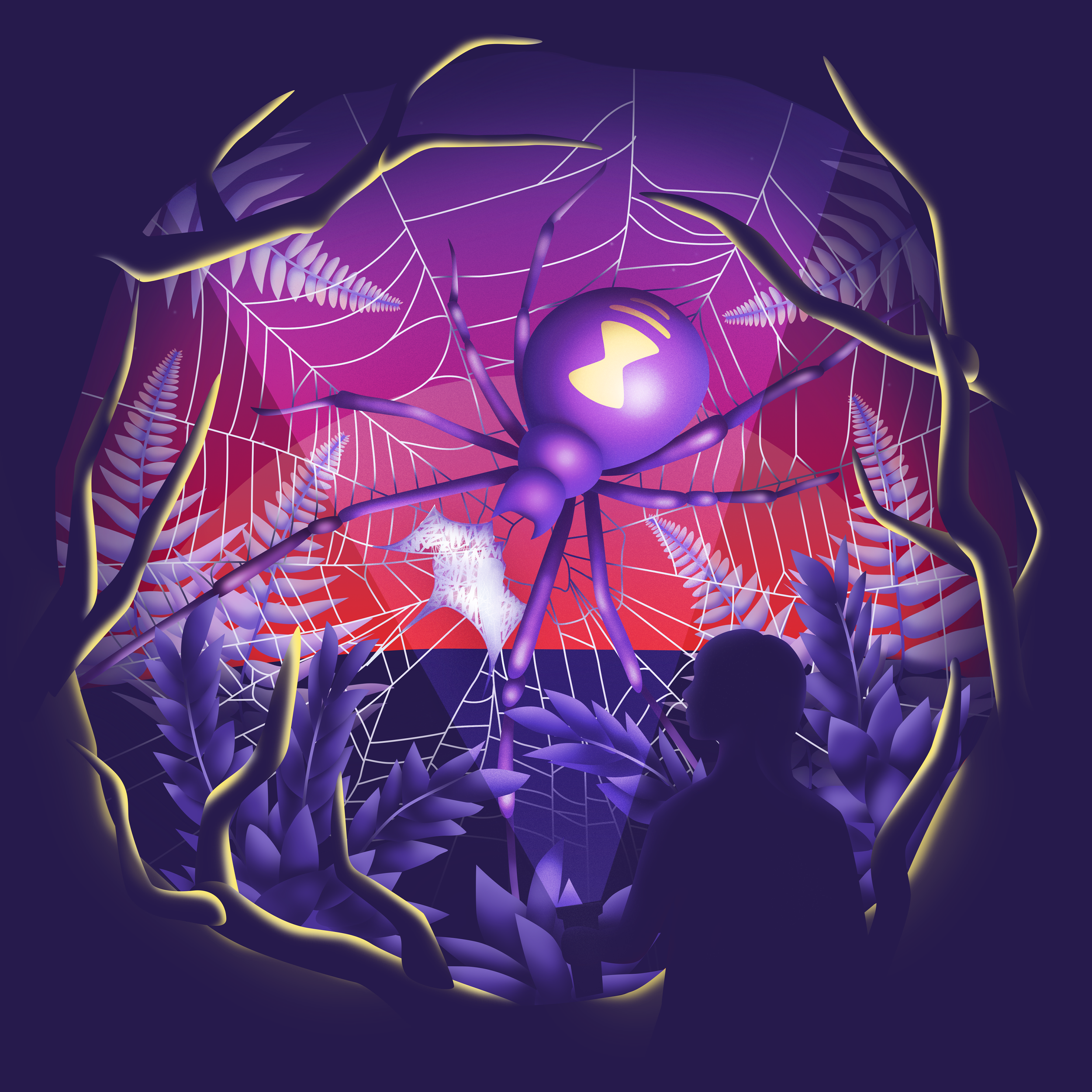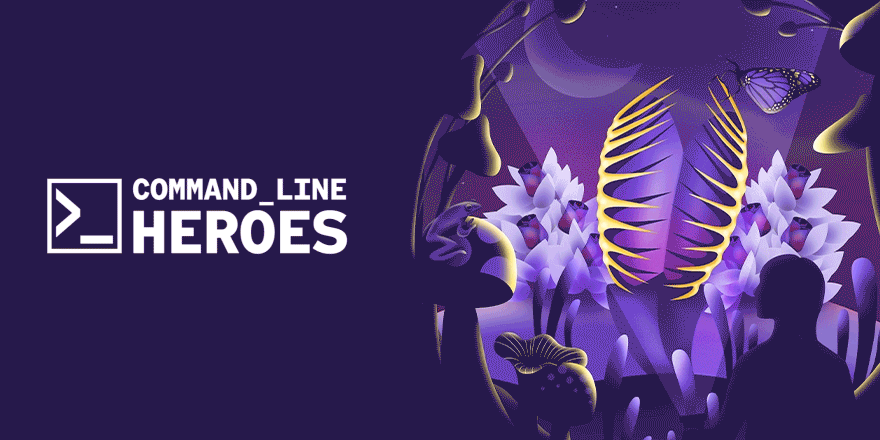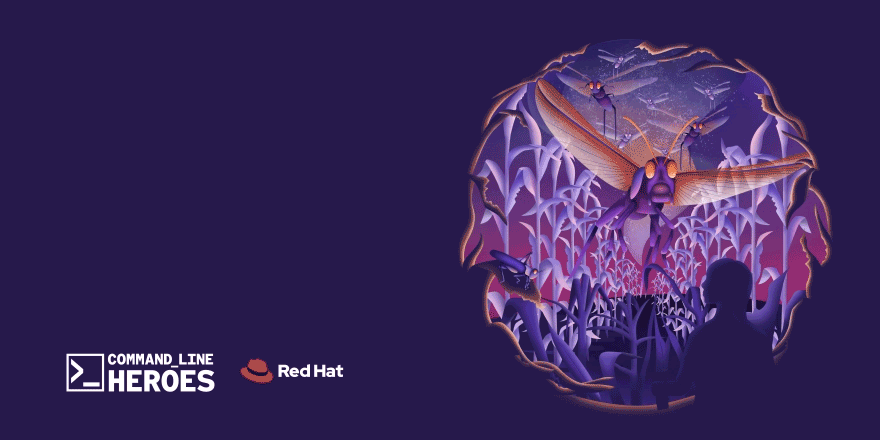Creating Compiler
Competitive analysis
As pre-work for our concepting process, we worked with our production partner Pacific Content to identify the main podcast “neighborhoods” in the tech space. In doing so, we ensured that we were going down the right path to fill a gap in the podcasting market rather than be redundant. We also conducted competitive analysis, looking at how other podcast networks show up - everything from Charles Shwab to Gimlet. This helped us identify where we wanted to land in terms of overall tone with our podcasts, an important consideration as we created a brand new one.
Facilitating collaboration sessions
I was responsible for facilitating weekly working sessions with a cross-functional team. At the first couple of these sessions, we dumped anything and everything that was inspiring us into our virtual white boarding space. After a week or two of this, we started to see clear groups emerge, and I synthesized these buckets into short concept statements.
Iterate, iterate, iterate
We found that the easiest way to get ideas out fast and quickly vet if they worked was to iterate on the podcast thumbnail. The thumbnail is arguably the most viewed visual asset for any podcast, and we needed our thumbnail to be recognizable and impactful. Limiting ideation to black and white only pushed us to think of unique visual solutions that aligned conceptually with the content of the podcast.
At this stage, I again synthesized our ideas into clear buckets and made decisions on which directions we should pursue further, and which directions we should leave behind. At Red Hat, a huge part of the brand is leaning into the color red. This can be difficult not only because of color theory and contrast needs, but also because red can come off as harsh, or have a negative connotation, especially in a tech context. Our team really resonated with the use of orange/peach/yellow to mellow the red out while still maintaining that energy and boldness.
Designing for a system
We landed eventually on the concentric circle “C” for our thumbnail, but had to consider how this would expand to a full system that was flexible enough for promoting biweekly episodes with widely varying topics. At this point in the process, the team split up to work on their respective podcast production roles, and I took on the expansion of the system to an actual identity.
As we tested ideas on placements of different shapes and sizes, I worked alongside our UX and web designers to translate the art direction to web, making sure that it could be adapted to responsive pages and allowed for user-friendly interactions and accessibility.
Experience Compiler on web here.
A scalable social media kit
With biweekly episodes, it was important to build a promotional kit that was systematic enough for quick asset creation, but flexible enough to allow for the broad range of topics the podcast covered. A huge consideration for me in creating these was being ADA compliant. Though ADA compliance isn’t typically considered for flat graphics, these did have information not otherwise stated in post copy that would be important for everyone to be able to read. I put a lot of consideration into how I could maintain the unique, dynamic color palette while still ensuring contrast for legibility.
From one thumbnail, to a flexible, sustainable, evolving identity system
With the launch of Compiler, we grew our unique Red Hat audio listenership to over 100k in just the first two months in market. The week of launch, Compiler premiered at #48 in Apple’s top podcasts. In the first month we hit 20k unique listeners, and that number continues to grow, with listeners all over the world on every continent but Antarctica.
Command Line Heroes Season 9
After successfully getting Compiler into market at a sustainable pace, I joined the Command Line Heroes team for the final season of the show. Command Line Heroes is a narrative podcast, and a recognizable feature of the show is that each episode has unique artwork, with each season having one cohesive narrative theme.
Season 9 was all about security threats, with the episode titles and formats inspired by horror movies and stories.
Creating a visual narrative
After a couple weeks of ideating with the team, we landed on a visual narrative that showed our protagonist encountering different “monsters” (each a metaphor for the security threat at hand) on a journey in the night. At the final episode, our protagonist finally reaches the light at the end of the tunnel, a sunset that cleverly aligns with the final episode of Command Line Heroes - the sunsetting of the show.
Proof of concept
We used sketches of a few episodes as proof of concept along with a season level artwork to get buy in from key stakeholders. I worked with another designer on this, and we were responsible for artwork for 4 episodes each. This involved getting extremely specific and systematic with how we built each piece, down to a four part layering system in each artwork with corresponding primary colors. This ensured continuity throughout the whole season, even with two different illustrators.
Building episode art
I created the artwork for episodes 2,4,6, and 8, the final episode of the show.
The Season 9 system
Experience Command Line Heroes on web here.
Growing Red Hat Audio
At the beginning of 2021, we had one show in its 7th season; now, Red Hat Audio is a tech podcast network in progress with two shows in market and plans to grow more. We’ve worked to streamline our processes for how we conceptualize, produce, and promote episodes of our podcasts, with Command Line Heroes and Compiler serving as guides for best practices on creating successful tech podcasts in the future. Our work with Command Line Heroes and Compiler has established a new visual standard and differentiated Red Hat in the tech podcasting and storytelling space.
Credits: Claire Allison (art director: Compiler; senior designer: Command Line Heroes), Karen King (senior designer: Command Line Heroes), Nick Burns (associate creative director), Brent Simoneaux (marketing director), Rachel Ertel (senior UX designer), Johan Philippine (audio writer), Caroline Creaghead (senior audio producer), Kim Huang (senior audio writer), Victoria Lawton (senior program manager), Aaron Williamson (UX design manager)
This is the personal site of Claire Allison and is in no way affiliated with or endorsed by Red Hat, Inc.


